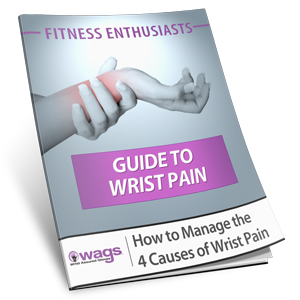There are many reasons for knee pain –overuse, arthritis or an injury that damages the structures in and around the knee joint. Aside from the obvious direct hit to the knee, often knee injuries are caused by more subtle forces such as overuse, twisting motions and overstretching. A stress from one direction may result in a sprain -an overstretching or tear in one of the ligaments, while a twist of the knees often causes a tear in the cartilage or meniscus. Taking the knee joint through a greater range of motion than it can tolerate, such as in hyperflexion or hyperextension, results in a strain or an injury to the muscles and tendons surrounding the knee. Knee pain in yoga can also be caused by the joint above or below the knee –tight inflexible hips or unstable, poorly aligned ankles. Below, are some yoga poses to avoid with knee injury.
 1. Lotus Pose (Padmasana): Flexible hips in external rotation are needed to assume a full lotus pose where the feet are placed on the opposite thigh. Forcing your foot into this position without the rotation available in the hips will put extreme sideways stress on the knees and can result in a ligament tear or complete rupture. Modify lotus pose by sitting as comfortable as possible in a crossed ankle seated position, if necessary on a raised surface and support the thighs / knees with blocks or rolled up blankets. With the outer thighs fully supported the legs and hips muscles can relax and gradually stretch so flexibility improves.
1. Lotus Pose (Padmasana): Flexible hips in external rotation are needed to assume a full lotus pose where the feet are placed on the opposite thigh. Forcing your foot into this position without the rotation available in the hips will put extreme sideways stress on the knees and can result in a ligament tear or complete rupture. Modify lotus pose by sitting as comfortable as possible in a crossed ankle seated position, if necessary on a raised surface and support the thighs / knees with blocks or rolled up blankets. With the outer thighs fully supported the legs and hips muscles can relax and gradually stretch so flexibility improves.
 2. Hero’s Pose (Viransana): In Hero’s pose the hips need to internally rotate in this kneeling / sitting pose, which is the the opposite hip action of Lotus pose. Assuming this position without the flexibility in the hips creates torque on the inside of the knees and can result in damaged or torn cartilage of the medial meniscus. If Hero’s pose causes discomfort, a compressing or twisting sensation in the knees then modifications are needed to avoid injury. Spread the knees slightly apart, align the lower leg bones under the thighs and place a block or blanket under the buttocks to promote better alignment and enable you to relax into the pose.
2. Hero’s Pose (Viransana): In Hero’s pose the hips need to internally rotate in this kneeling / sitting pose, which is the the opposite hip action of Lotus pose. Assuming this position without the flexibility in the hips creates torque on the inside of the knees and can result in damaged or torn cartilage of the medial meniscus. If Hero’s pose causes discomfort, a compressing or twisting sensation in the knees then modifications are needed to avoid injury. Spread the knees slightly apart, align the lower leg bones under the thighs and place a block or blanket under the buttocks to promote better alignment and enable you to relax into the pose.
 3. Tree Pose (Vrksasana): In some yoga poses it’s easy to hyperextend or over straighten the knee joint, particularly if you have hypermobile knees. When the knee joints are ‘locked’ this is a passive action without full engagement of the quadriceps muscles. This compresses the joint and puts excessive strain on the knee cartilage, especially the medial meniscus, which can result in a tear if you twist or suddenly move. Ligaments and tendons can also be over stretched and subject to micro tears. It’s especially import to place the foot above or below the knee in Tree pose and never directly on the side of the knee. In Triangle Pose (Trikonasana) there is also the tendency to over straighten and lock the knee of the front leg. To avoid hyperextension in the knees strongly engage the quadriceps muscles and slightly bend your knees. Even a slight micro bend where your knee is actually straight, rather than over extended will help protect the knee joint. Shifting the weight slightly forward from the heels to the balls of the feet will help to avoid locking the knees.
3. Tree Pose (Vrksasana): In some yoga poses it’s easy to hyperextend or over straighten the knee joint, particularly if you have hypermobile knees. When the knee joints are ‘locked’ this is a passive action without full engagement of the quadriceps muscles. This compresses the joint and puts excessive strain on the knee cartilage, especially the medial meniscus, which can result in a tear if you twist or suddenly move. Ligaments and tendons can also be over stretched and subject to micro tears. It’s especially import to place the foot above or below the knee in Tree pose and never directly on the side of the knee. In Triangle Pose (Trikonasana) there is also the tendency to over straighten and lock the knee of the front leg. To avoid hyperextension in the knees strongly engage the quadriceps muscles and slightly bend your knees. Even a slight micro bend where your knee is actually straight, rather than over extended will help protect the knee joint. Shifting the weight slightly forward from the heels to the balls of the feet will help to avoid locking the knees.
Gradually work towards increased flexibility by going to your edge, but not beyond it. Make your yoga practice a safe, healthy and mindful one by modifying poses that are not accessible to your level of flexibility. Order our WAGs Yoga Wrist Support Gloves for added wrist comfort during yoga. Check out these workout gloves with wrist support.





Knee pain is a common complaint that affects people of all ages. Knee pain may be the result of an injury, such as a ruptured ligament or torn cartilage. Medical conditions — including arthritis, gout and infections — also can cause knee pain. **;’
Remember to head to our very own website <http://healthwellnesslab.comjh
I feel like I over-extended my knee in a yoga class yesterday where we did triangle. What should I do now to make sure I heal/do not damage? I feel it behind my knee. Thank you.
i do yoga but the pigeon i do believe is not helping my left knee. i have had this pain a long time. but when i do this pose that helps my lower back alot, then i have terrible knee pain, what else can i do maybe to help my back pain but not hurt my knee. thanks
I have pain on inside (medial) of knee. I’m two years into my yoga journey as a pretty in shape 53 yo. I started to help my back and it worked and gave me a pain free back for first time in 20 years. what was best for my back was the Corepower 60 min version of Bickram. But 1.5 years into it, i have developed pain on inside of knee. I recently have taken my first break from my 3x week practice, and after 2 weeks the pain in knees has subsided. Frustrated because i love the yoga and my back may tighten. any ideas would be very much appreciated.
I have seen sites saying to avoid hero’s pose. Always to keep microbend in knees in all poses. looking for mor info with anyone who can help
I have exactly the same problem. Did you find something helpful?
This pose is excellent for shoulder joints, and also provides a good opportunity to stretch your back and quadricep muscles down through your legs.
I have knee sprain on left side of my right knee! I believe it happened while doing lying down pigeon pose ! Any info on anything that may help ! It’s been over 2 months for sure !